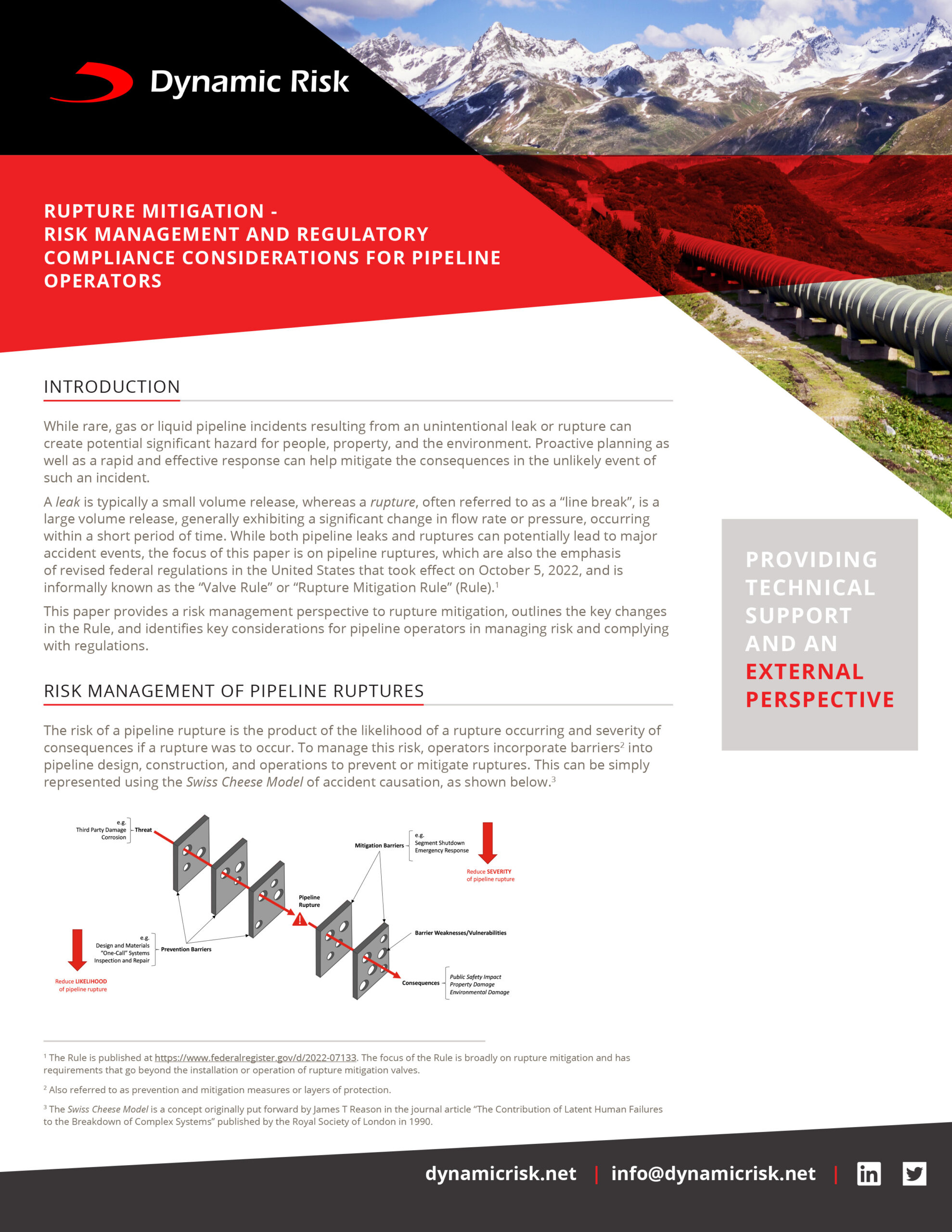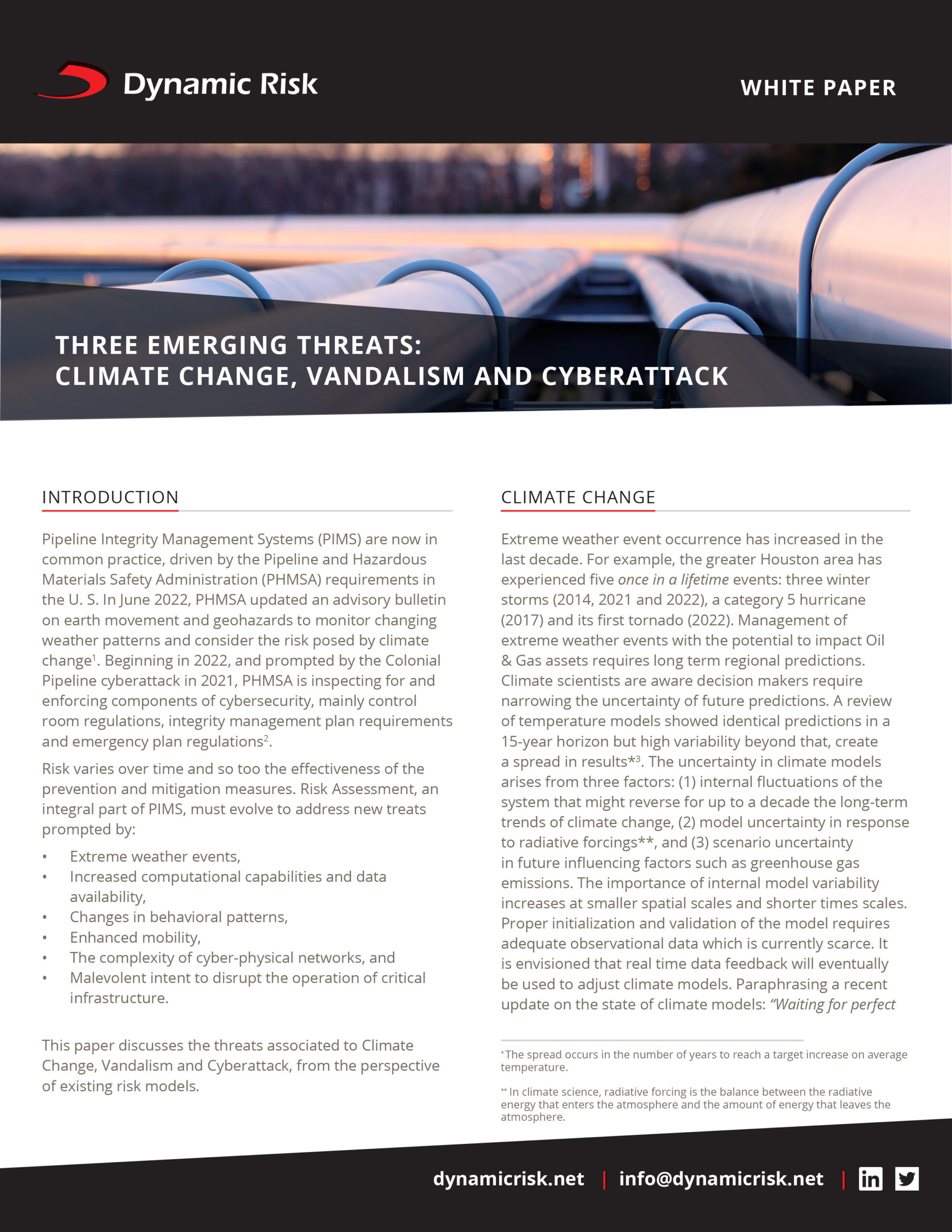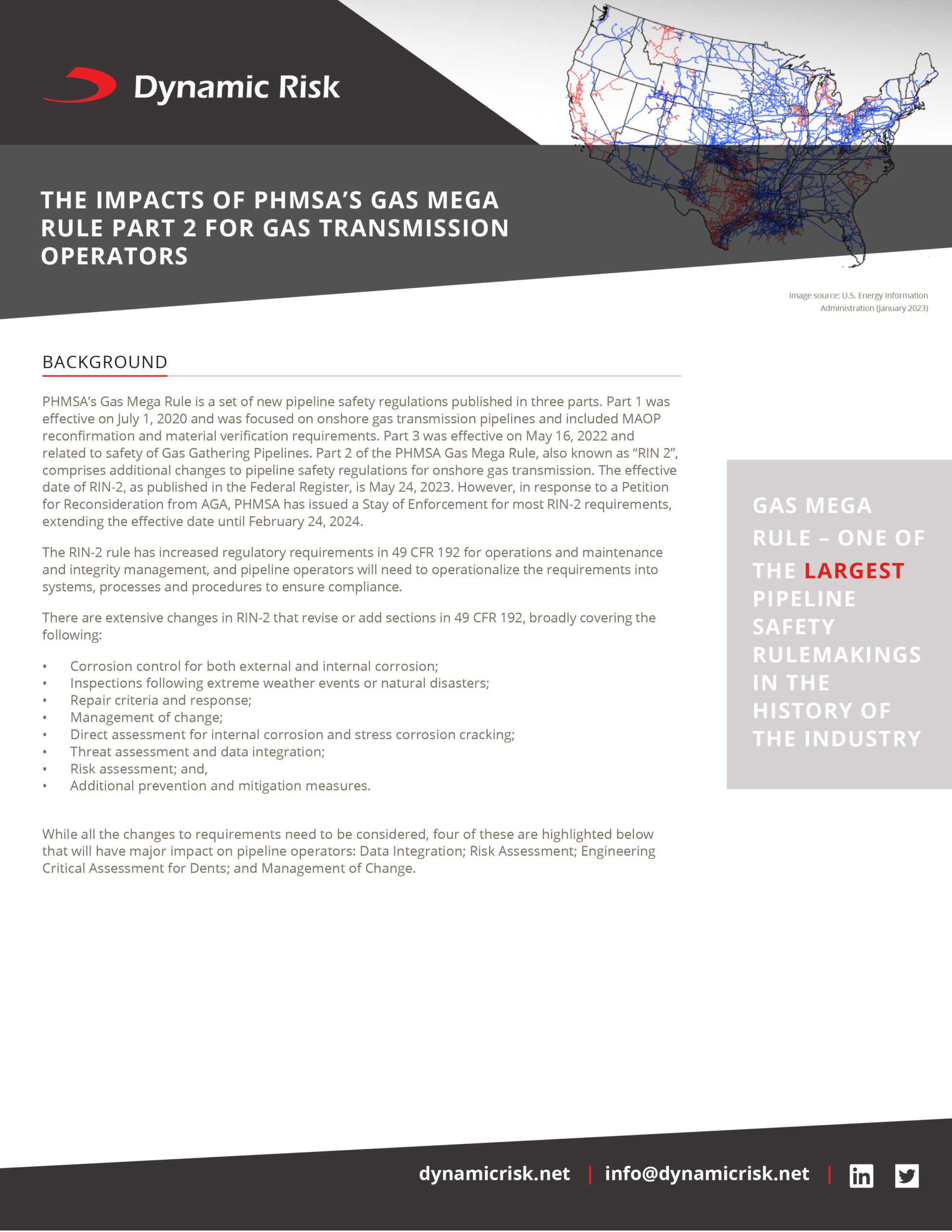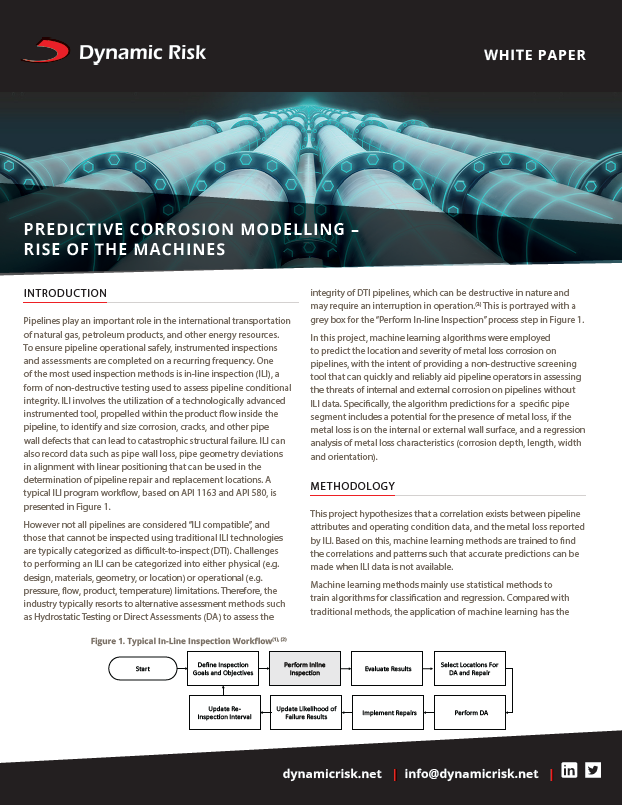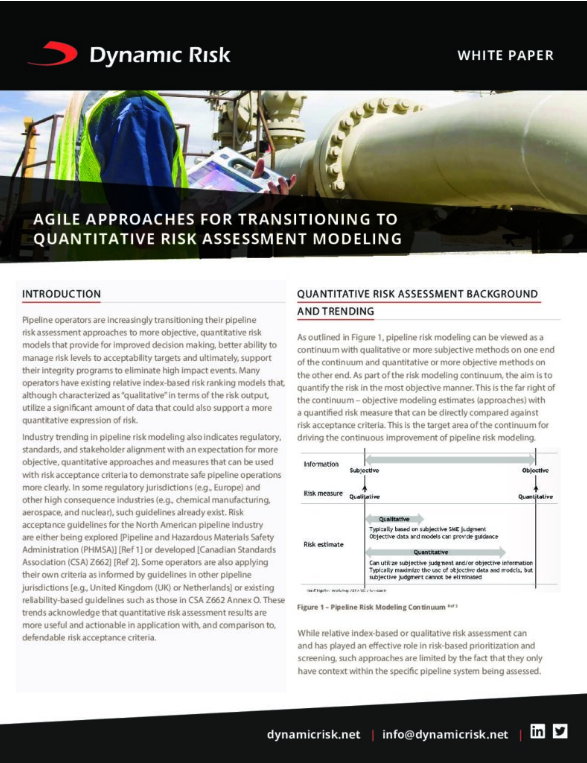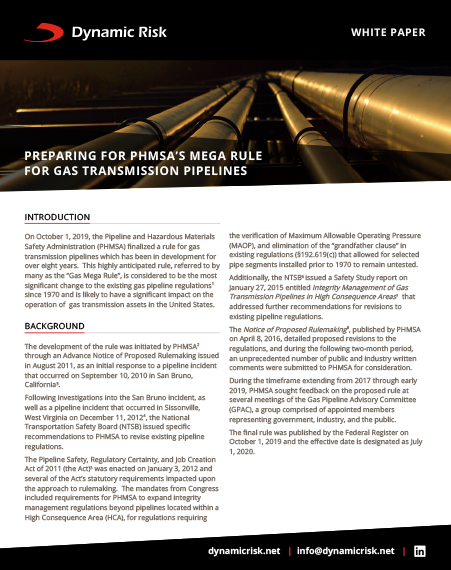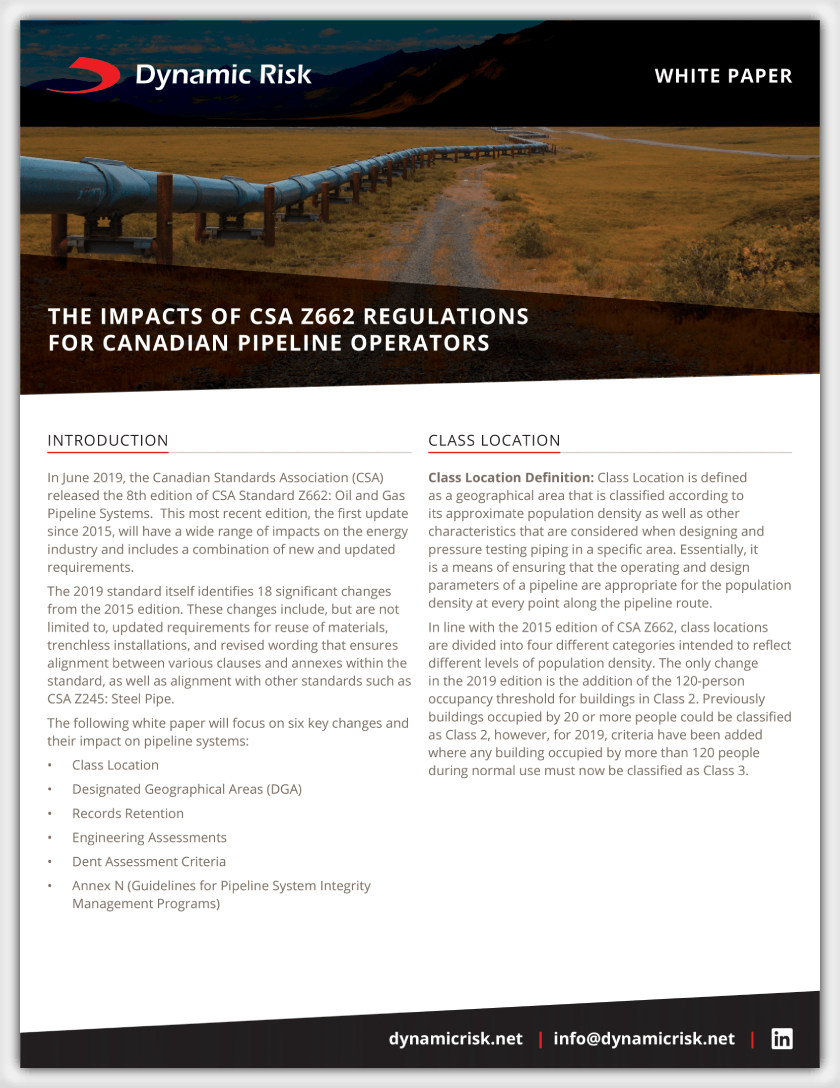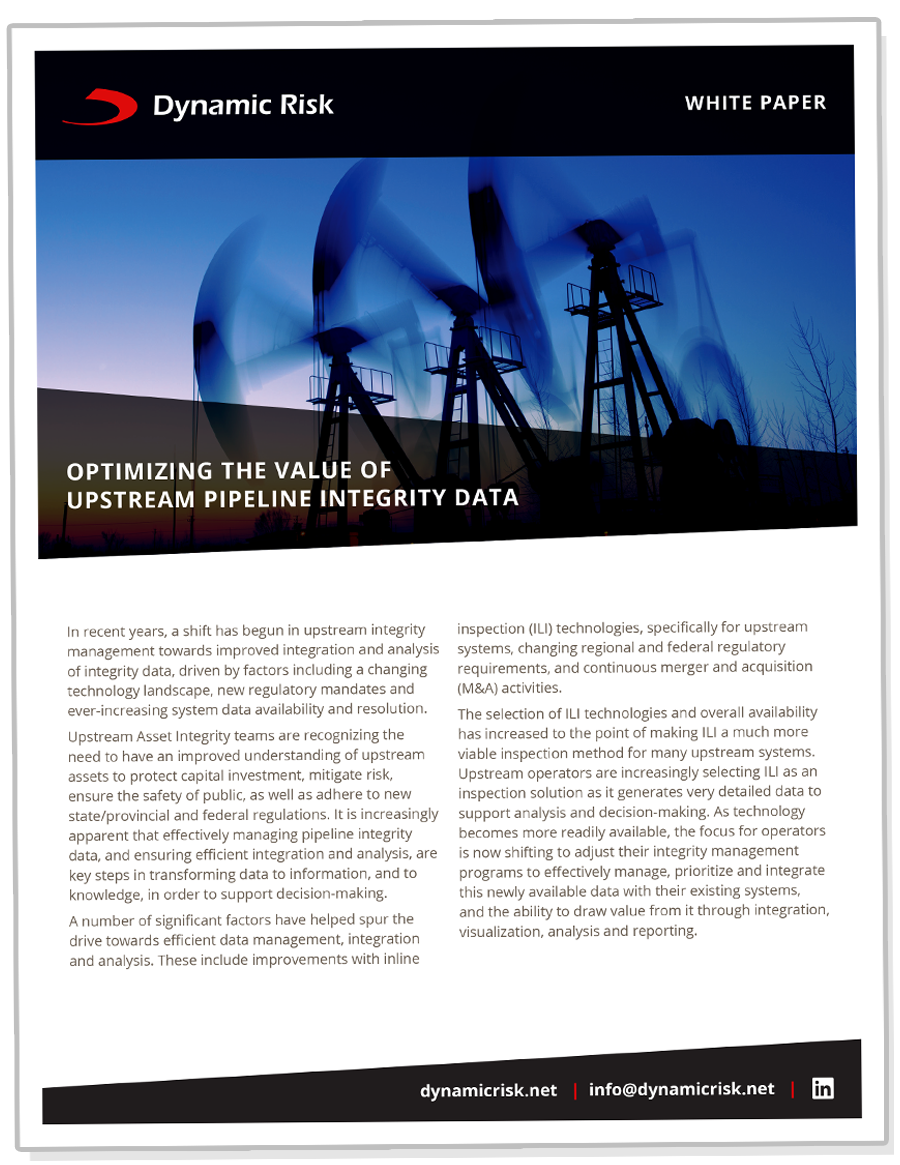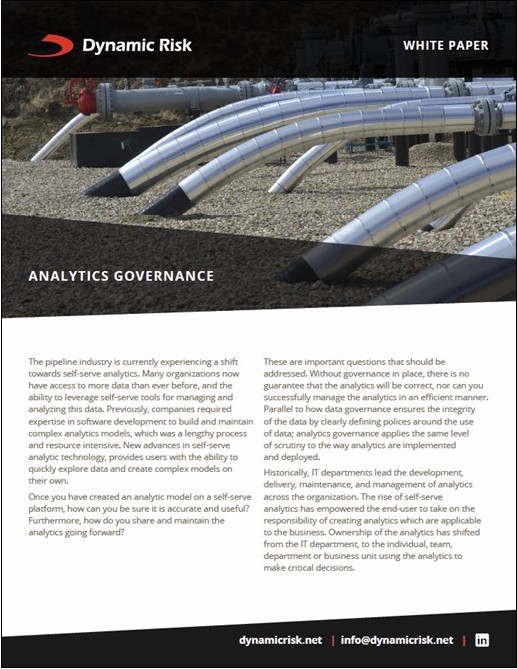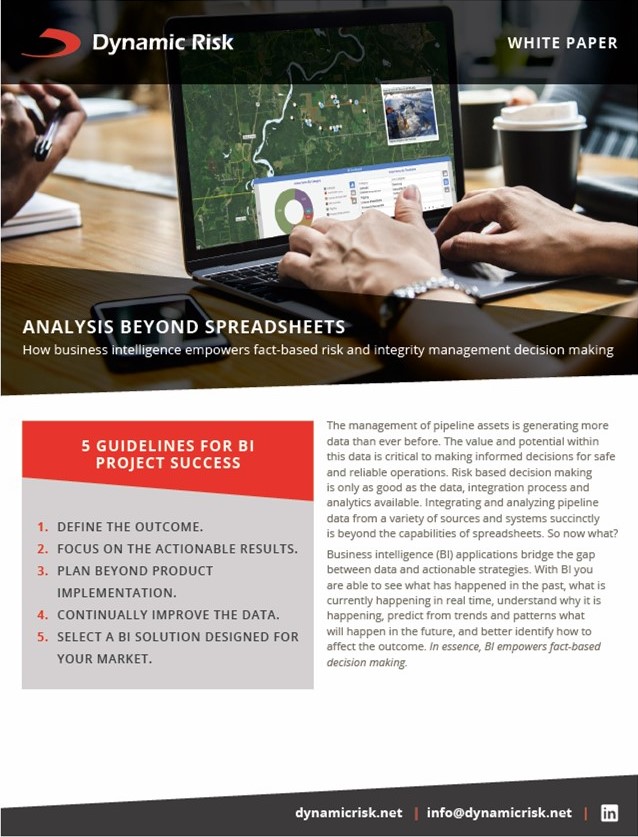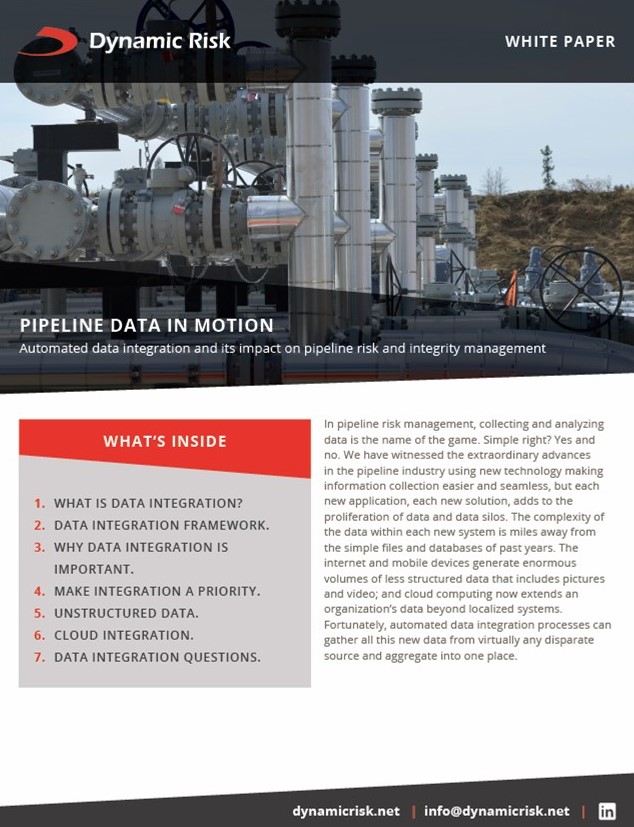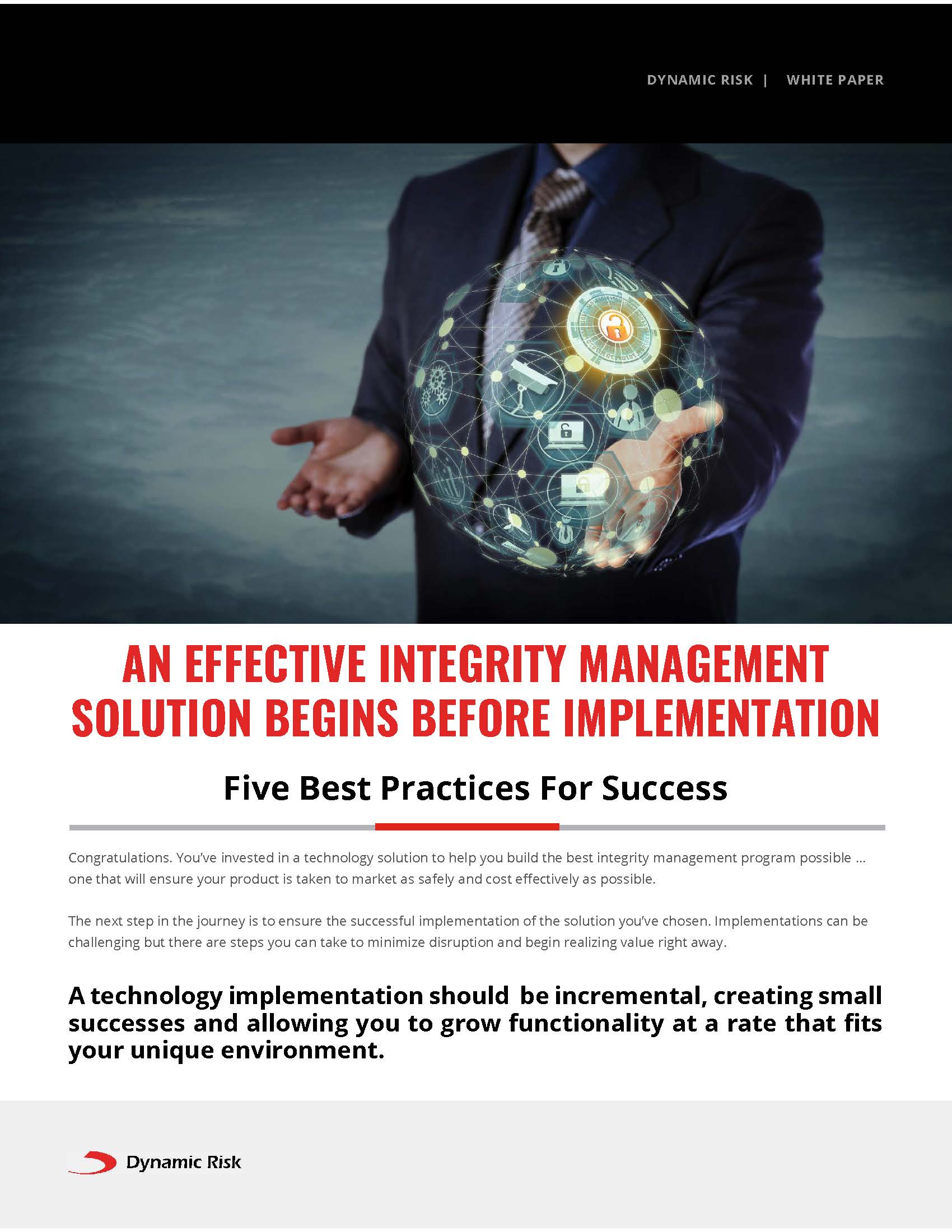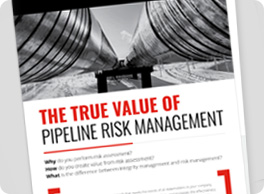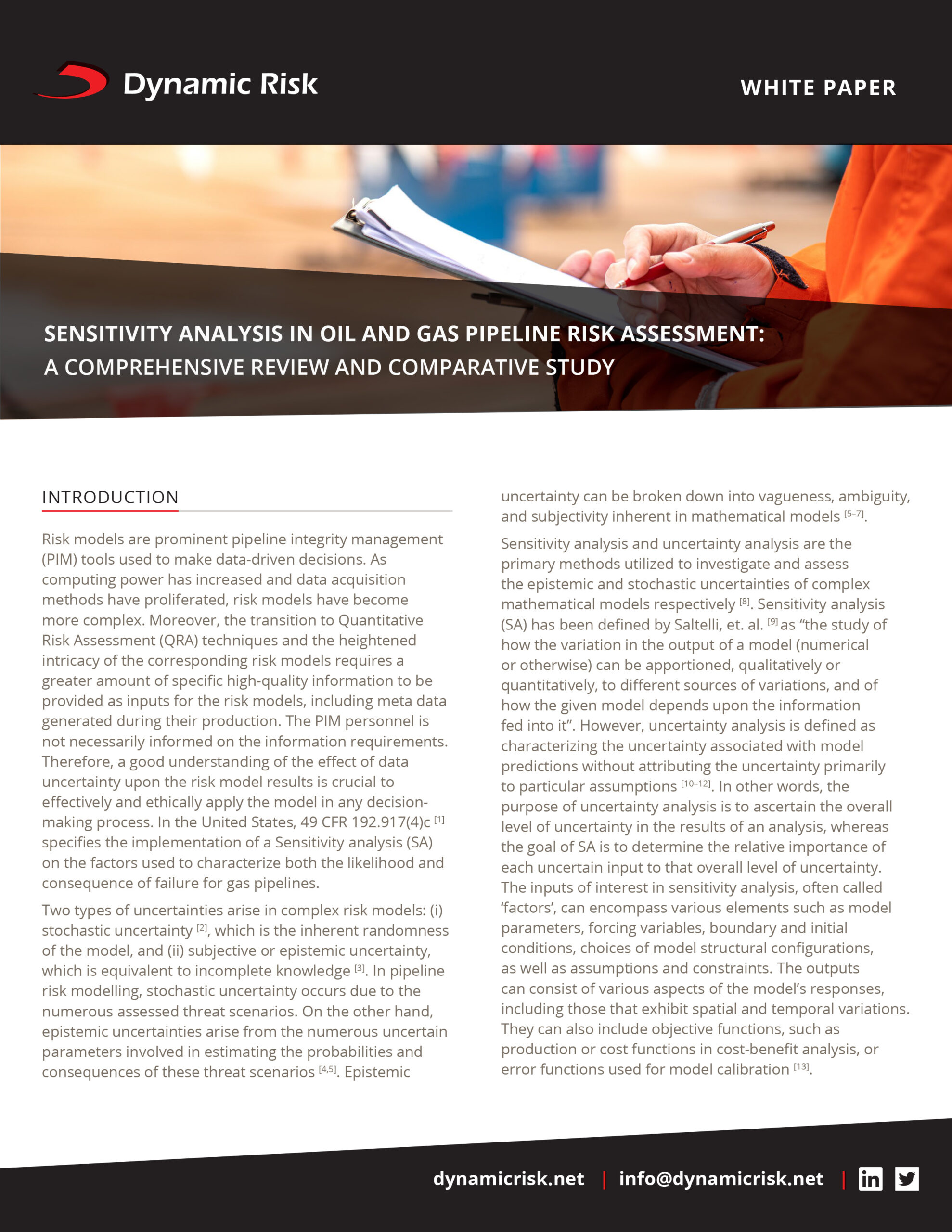
Sensitivity Analysis in Oil and Gas Pipeline Risk Assessment: A Comprehensive Review and Comparative Study
This white paper provides a brief review of local and global Sensitivity Analysis (SA) techniques, identifying critical gaps. Additionally, it offers a comprehensive comparative study, delving into the key criteria for technique selection and it includes two detailed case studies showcasing the practical application of global simulation-based SA methods in quantitative risk models.Download White Paper
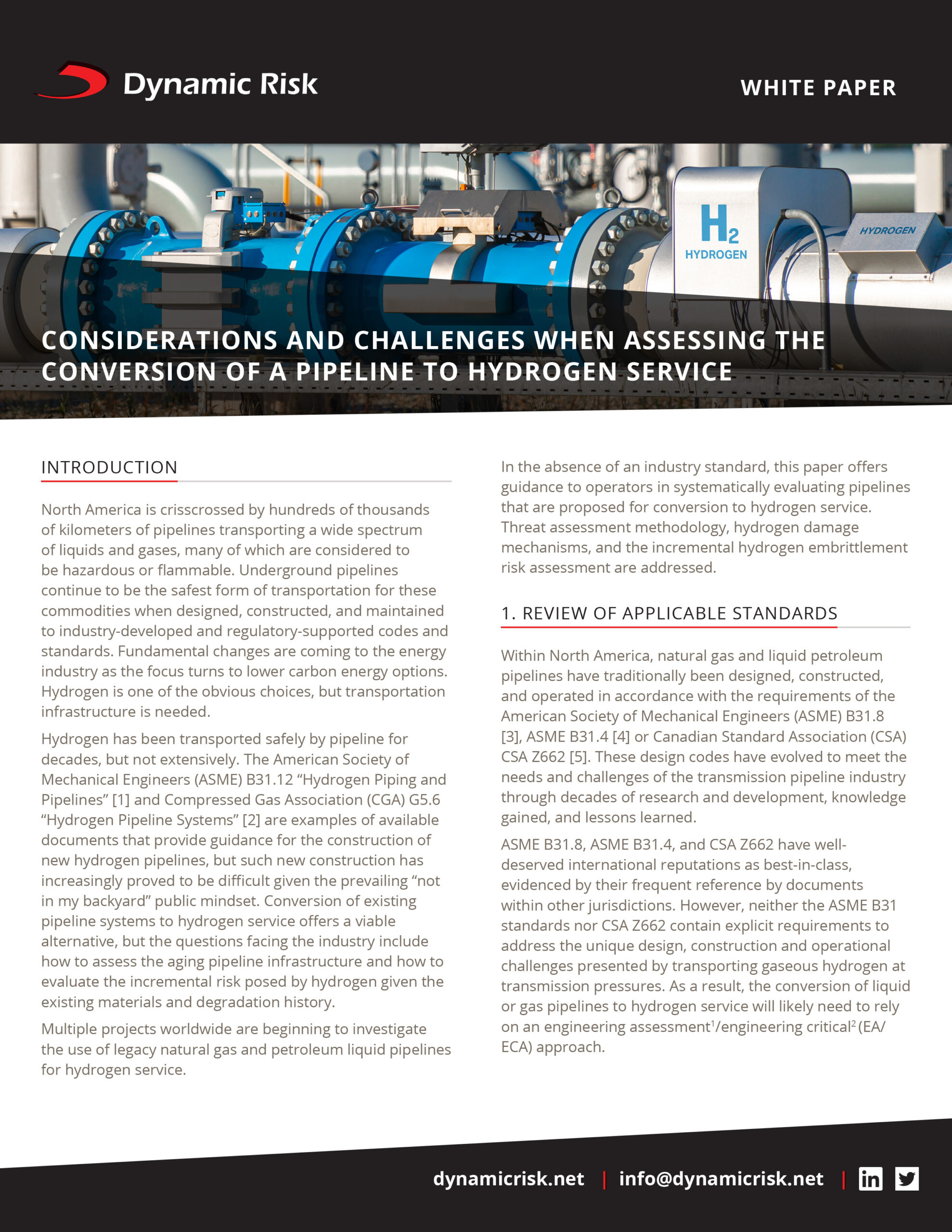
Considerations and Challenges When Assessing the Conversion of a Pipeline to Hydrogen Service
This whitepaper offers guidance to operators in systematically evaluating pipelines that are proposed for conversion to hydrogen service. Threat assessment methodology, hydrogen damage mechanisms, and the incremental hydrogen embrittlement risk assessment are addressed.Download White Paper
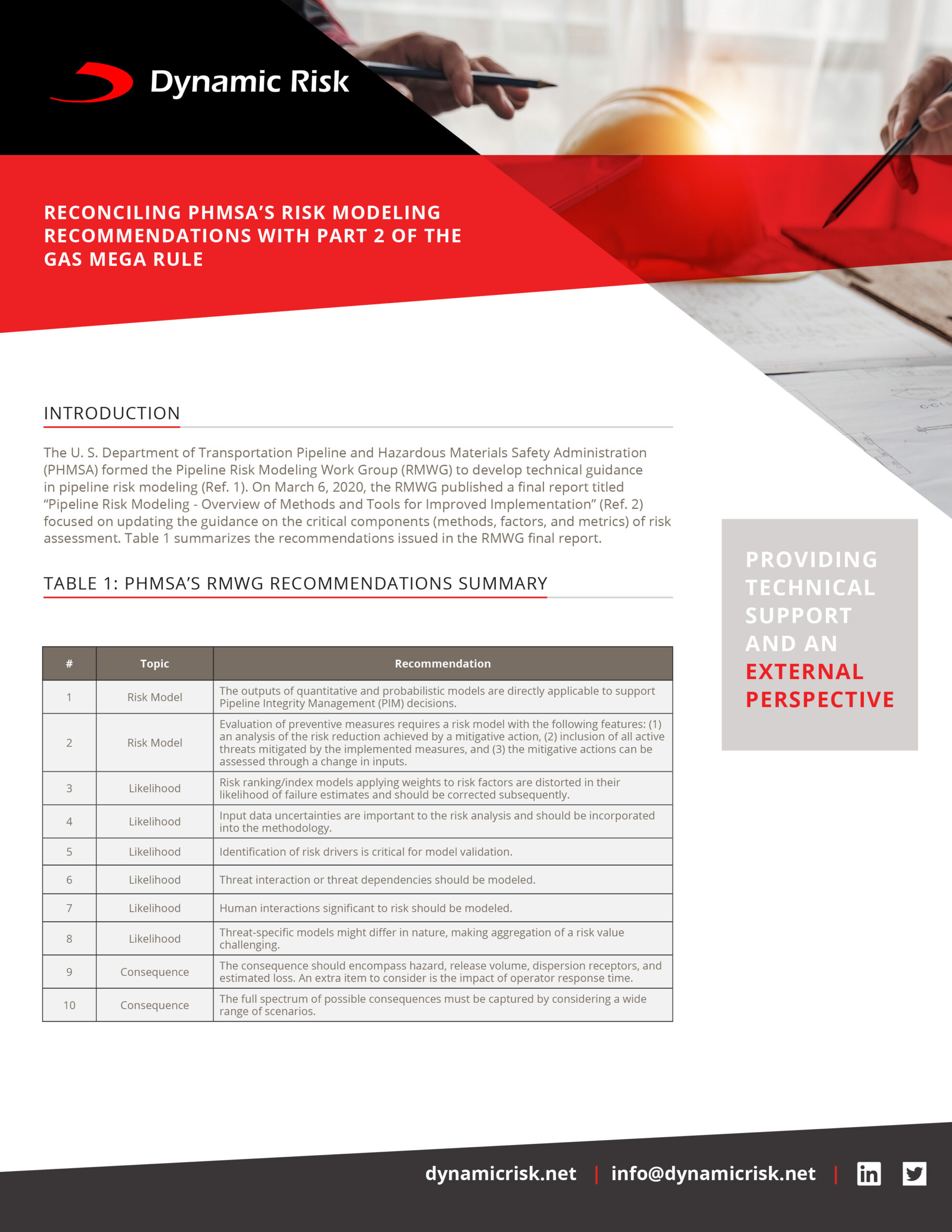
Reconciling PHMSA’S Risk Modeling Recommendations with Part 2 of the Gas Mega Rule
The purpose of this paper is to perform a comparative analysis of the new regulatory requirements pertaining to data analysis, data integration, threat identification, and risk assessment, and the risk modeling recommendations, both issued by PHMSA, to evaluate potential conflicts that may complicate regulatory implementation.Download White Paper
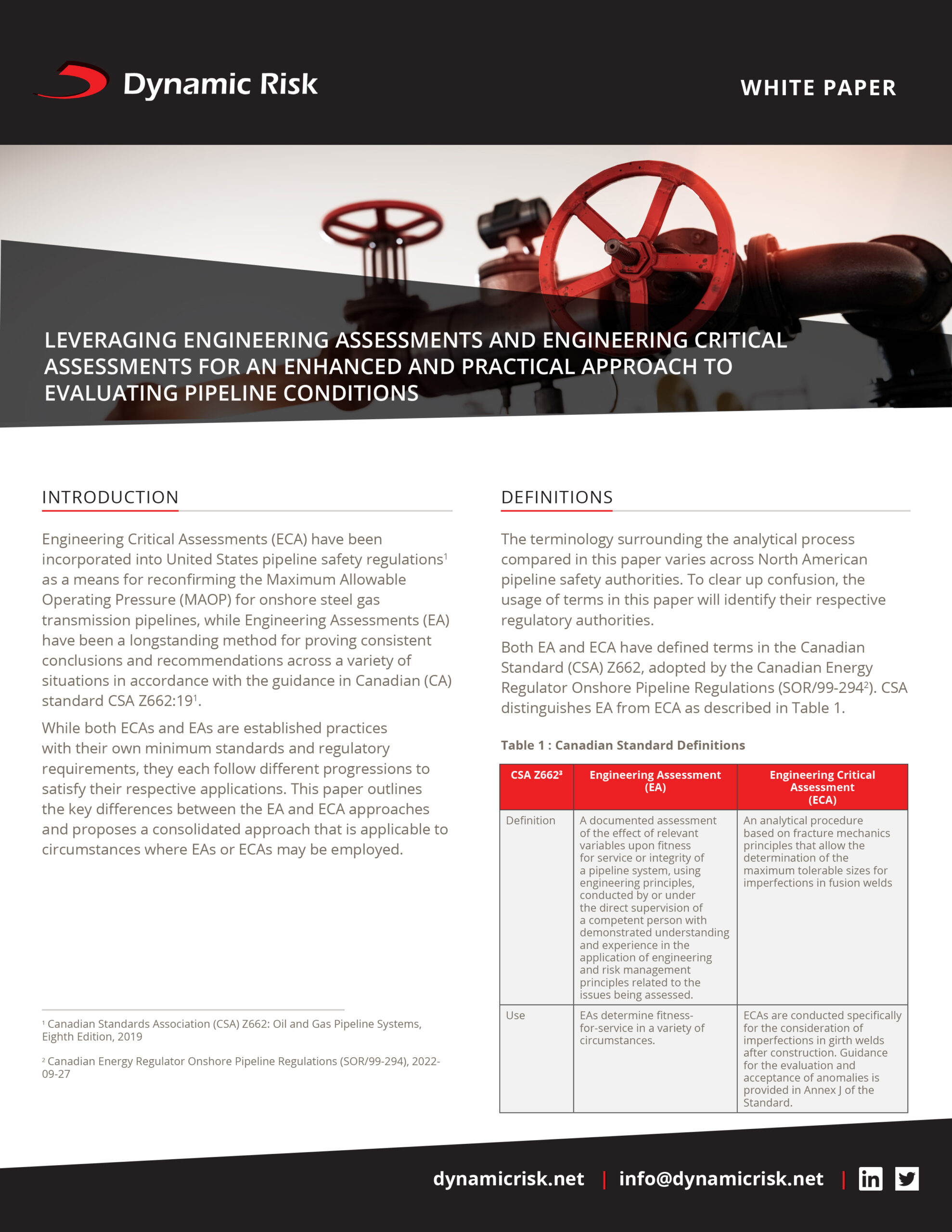
Leveraging Engineering Assessments and Engineering Critical Assessments for an Enhanced and Practical Approach to Evaluating Pipeline Conditions
This paper outlines the key differences between the EA and ECA approaches, and proposes a consolidated approach that is applicable to circumstances where EAs or ECAs may be employed.Download White Paper
Rupture Mitigation - Risk Management and Regulatory Compliance Considerations for Pipeline Operators
While rare, gas or liquid pipeline incidents resulting from an unintentional leak or rupture can create potential significant hazards for people, property, and the environment. Proactive planning as well as a rapid and effective response can help mitigate the consequences in the unlikely event of such an incident. This paper provides a risk management perspective to rupture mitigation, outlines the key changes in the Rule, and identifies key considerations for pipeline operators in managing risk and complying with regulations.Download White Paper
Three Emerging Threats - Climate Change, Vandalism and Cyberattack
Beginning in 2022, and prompted by the Colonial Pipeline cyberattack in 2021, PHMSA is inspecting for and enforcing components of cybersecurity, mainly control room regulations, integrity management plan requirements and emergency plan regulations. This paper discusses the threats associated to Climate Change, Vandalism and Cyberattack, from the perspective of existing risk models.Download White Paper
The Impacts of PHMSA's Gas Mega Rule Part 2 for Gas Transmission Operators
Part 2 of the PHMSA Gas Mega Rule, also known as “RIN 2”, comprises additional changes to pipeline safety regulations for onshore gas transmission. While all the changes to requirements need to be considered, four of these changes will have a major impact on pipeline operators: Data Integration; Risk Assessment; Engineering, Critical Assessment for Dents; and Management of Change.Download White Paper
Insight Hub – Pipeline Data Assessment and Analysis White Paper
This white paper describes how pipeline material and attribute data may be ingested into a multi-operator data warehouse to assess the quality and reliability of an Operator’s pipeline material and attribute data, and for evaluating certain components to pipeline data assessment and analysis.Download White Paper
Predictive Corrosion Modelling - Rise of the Machines White Paper
This white paper will showcase a machine-learning (ML) approach to predict areas and the extent of metal loss corrosion in an effort to quantify qualitative risk factors such as prevention and mitigation (P&M) activities.Download White Paper
Agile Approaches for Transitioning to Quantitative Risk Assessment Modeling White Paper
Pipeline operators are increasingly transitioning their pipeline risk assessment approaches to more objective, quantitative risk models that provide for improved decision making, better ability to manage risk levels to acceptability targets and ultimately, support their integrity programs to eliminate high impact events.Download White Paper
Engineering Assessments in Support of Pipeline Safety – Emerging Trends and Approaches
Engineering Assessments will increasingly be applied in the pipeline industry to demonstrate fitness-for-service and appropriate safety margins to stakeholders including industry, regulatory, and the public.Download White Paper
Preparing for PHMSA's Mega Rule for Gas Transmission Pipelines
Our whitepaper “Preparing For PHMSA's Mega Rule For Gas Transmission Pipelines” offers a perspective on how Pipeline and Hazardous Materials Safety Administration (PHMSA)’s Mega Rule impacts US Transmission pipeline operators and best practices to remain regulatory compliant.Download White Paper
The Impacts of CSA Z662 Regulations for Canadian Pipeline Operators
In June 2019, the Canadian Standards Association (CSA) released the 8th edition of CSA Standard Z662: Oil and Gas Pipeline Systems. This whitepaper explores the new and updated requirements and impacts of these on the energy industry.Download White Paper
Optimizing The Value of Upstream Pipeline Integrity Data
Upstream Asset Integrity teams are recognizing the need for an improved understanding of upstream assets to protect capital investment, mitigate risk, ensure public safety, and adhere to regional and federal regulations.Download White Paper
Analytics Governance
Once you have created an analytic model on a self-serve platform, how can you be sure it is accurate and useful? With a solid Analytics Governance program.Download White Paper
Analysis Beyond Spreadsheets
Learn how business intelligence (BI) empowers fact-based risk and integrity management decision making. Includes "5 Guidelines for BI Project Success".Download White Paper
Pipeline Data In Motion
Our latest white paper Pipeline Data In Motion discusses automated data integration and its impact on pipeline risk and integrity management programs.Download White Paper
An Effective Integrity Management Solution Begins Before Implementation
Our latest white paper An Effective Integrity Management Solution Begins Before Implementation provides best practices and guidance to help ensure your technology investment is as successful as possible ... starting even before you implement it.Download White Paper
Explore the Evolution of Risk Assessment
The white paper The True Value of Pipeline Risk Management by Patrick Vieth, a respected expert in pipeline risk and integrity strategies, offers a perspective on not only how pipeline risk assessment can be performed, but understanding the ‘why’ risk results are often relied upon for various stakeholders.The white paper outlines useful strategies to help you envision a journey to a comprehensive risk management program that meets stakeholder needs, while delivering an effective and efficient result.
Download White Paper
Enterprise Risk Management System Development
The development of an ERM system should be fact-based and method driven, relying for guidance on appropriate and selected elements of industry recognized asset management and certification programs.Download White Paper



